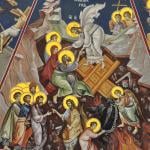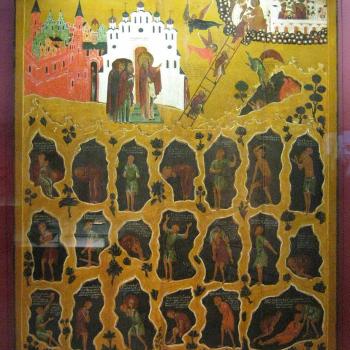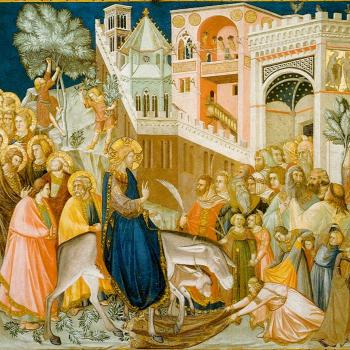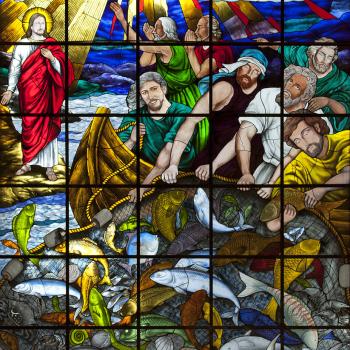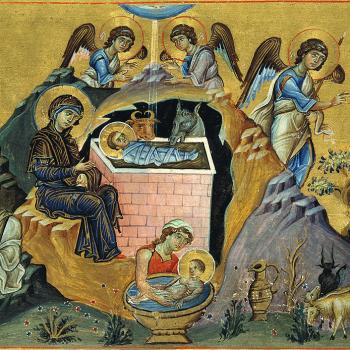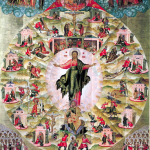
Too many people have an overly-physical conception of the eucharist, and because of it, they misunderstand the technical vocabulary the Western tradition has developed to explain it. That is, when they hear someone talking about the substance of the eucharist, they understand the term substance in an entirely physical fashion. Theologically, substance is to be understood as the metaphysical essence or the underlying reality of a thing; when saying the substance of the eucharist is Christ, it is saying the reality of the eucharist is Christ himself (hence, the real presence). Accidents refer to the non-essential elements connected to a thing but which are not necessary for the thing to be what it is; these can be physical in nature (like the sensual properties associated with bread and wine, such as their appearance, taste and smell). The convention which distinguishes substance from accidents is meant to help us understand how what we sense, and so what we experience physically, is not the reality we receive – we feel, taste, touch, small, and see bread and wine, as those are the physical qualities (accidents) which we experience when we receive the eucharist, but the reality of the eucharist, what it is, is not bread and wine, but Christ himself. While there are other ways we can use to describe the difference between what we perceive and what we receive, between the appearance and the reality, what is important for us is to believe that we partake of Christ through his sacramental (and real) presence, even if physically, what we eat and drink is bread and wine; it is truly Christ, as the Byzantine prayer says: “O Lord, I also believe and profess that this, which I am about to receive, is truly your most precious body and your life-giving blood, which, I pray, make me worthy to receive for the remission of all my sins and for life everlasting.” The eucharistic rite is not a cannibalistic rite because what we receive is not some physical piece of flesh and blood, but bread and wine, each of which represents a normative element of our diet. “The species and whatever other certain qualities of the earthly substances themselves, however, are preserved, so that those who see it may not be horrified at the sight of flesh and blood, and that believers may have a greater reward for their faith at the sight.” [1]
Thus, what we eat and drink is Jesus, but Jesus as he comes to us in a veiled appearance. We cannot physically sense Jesus there. We can, perhaps, do so spiritually if our spiritual senses have been restored to us, or we can, through our intellect and with faith, conceive the reality of what we receive and believe it. Nonetheless, what we see is bread and wine, while it is Jesus who comes to us, seeing us through the veil which he established for us:
He is with us, veiled by the wall of the sacramental species, gazing upon our devotion, and looking upon us in an unveiled manner through the windows. [Song 2.9] “Behold, he stands behind our wall, looking through the windows, gazing through the lattices.” While looking through the latices or the windows, he is not seen while he sees. And so, in this sacrament, the Lord sees us, although he is not seen by us. Now these are the windows, through which truth is brought to us in the sacrament, and the lattices, through which the goodness of Christ’s virtues shines upon us, by the paths Christ directs the rays of his light to us, although we do not see him except as veiled. [2]
Jesus comes, to us, sees who and what we are, knows us in ways which we do not even know ourselves. Through communion, he gives us access to himself, to all he is. We become one with him, and with everyone else who has joined themselves with him. While we become one body with Christ, and all those joined in with Christ in communion, we usually do not have some personal experience of this, rather, we contemplate it and realize the truth of it, hoping we will one day experience it for ourselves; there are some, mystics, who have had their spiritual senses enhanced so that they can sometimes experience what this unity is like, but they are few and far between. They sense with their spiritual senses the reality which begins with our baptism, where we not only become incorporated into the body of Christ, we receive in our baptism the Spirit which came upon Christ in his baptism. Thus there is a connection between the eucharist, baptism, and confirmation (which is why the three together are understood as the sacraments of initiation):
Baptism is not merely an imparting of grace, but an incorporation into the Body of Christ, a reception (with accompanying rights and duties) into the visible community of God. The Eucharist, as was seen above, is not merely an encounter of my person with the person of Christ; it is rather a meal of brotherhood. The symbolism contained in the fact that men from all nations and from all social ranks gather without distinction at one and the same table, that they partake of one and the same bread, and that any believer from anywhere can gather at this table, to which he is always everywhere invited, in any Catholic church throughout the world – this symbolism must again be made alive in our consciousness.[3]
Just like most of us do not perceive the reality of the eucharist, but only the physical accidents, so we do not normally perceive the reality of the other sacraments. This is why the sacraments come to us in physical forms which point to the truth contained in them, meaning, the sacraments are symbolic (even if they are not mere symbols). This is why it is wrong to say the eucharist or other sacraments are not symbols, because they are, and if we understand what is symbolic, and the reality presented through the symbols, we will better appreciate the truth of the sacraments even if we do not have the spiritual senses to perceive the reality of the sacraments for ourselves:
But carefully note that under the species of bread and wine as under signs and by designation the truth of the true bread and true drink, which is undoubtedly Christ, is somehow received by our souls in accord with the measure of the smallness of the infancy of our souls and the darkness of the present age, as I told you, for the production of spiritual refreshment, although it could not be received here by our souls in its bare state and the immensity of its glory. Those signs and those visible species of bread and wine introduce it by a most suitable designation, although by itself it is invisible and imperceptible to our souls. [4]
If we ignore the difference between the appearance and the reality, if we ignore the symbolic elements involved in the sacraments, we end up causing the kind of confusion which leads people to reject the sacraments (as can be seen happening with those who call the eucharist a cannibalistic rite). Most of us do not have the spiritual senses needed to perceive the reality of the sacraments, but even if we do not sense that reality, our reception of the sacraments will give us the grace we need, the grace which will hopefully restore our spiritual senses so that we will experience what the mystics experience, that is, the reality of what we have received and the effects the sacraments have had on us.
[1] Lanfranc of Canterbury, “On the Body and Blood of the Lord” in Lanfranc of Canterbury: On the Body and Blood of the Lord and Guitmund of Aversa: On The Truth of the Body and Blood of Christ in the Eucharist. Trans. Mark G. Vaillancourt (Washington, DC: Catholic University of America Press, 2009), 65.
[2] St. Albert the Great, On the Body of the Lord. Trans. Sr. Albert Marie Surmanski, OP (Washington, DC: CUA Press, 2017), 243.
[3] Joseph Ratzinger, “The Dogmatic and Ascetical Meaning of Christian Brotherhood” in Man Before God: Toward A Theology of Man. Ed. Dennis Burkhard OFM, Leo A. Connolly, William T. Merten, and Michael G. Steinhauser (New York: P.J. Kenedy & Sons, 1966), 122.
[4] William of Auvergne. Rhetorica divinia, seu ars oratoria eloquentiae divinae. Trans. Roland J Teske SJ (Walpole, MA: Peeters, 2013),255.
Stay in touch! Like A Little Bit of Nothing on Facebook.
If you liked what you read, please consider sharing it with your friends and family!
N.B.: While I read comments to moderate them, I rarely respond to them. If I don’t respond to your comment directly, don’t assume I am unthankful for it. I appreciate it. But I want readers to feel free to ask questions, and hopefully, dialogue with each other. I have shared what I wanted to say, though some responses will get a brief reply by me, or, if I find it interesting and something I can engage fully, as the foundation for another post. I have had many posts inspired or improved upon thanks to my readers.



